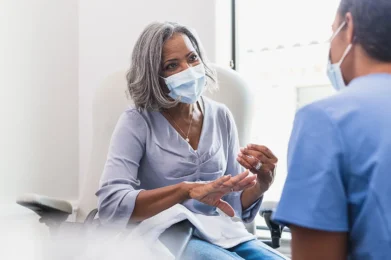In This Article:
- In January 2019, The Arizona Department of Health Services reported a 16% increase in STDs from 2016 to 2017, the last year for which statistics are available. The increase continues a decade-long rise. In Maricopa County, STDs rose a staggering 14% in 2017 alone.
- To prevent STDs, use a condom, get tested regularly, limit your number of sexual partners and make sure your partners are appropriately tested and treated. Also, avoid sex if genital sores, rash, or discharge is present and take pre-exposure prophylaxis (PrEP) to prevent HIV.
- Condoms are effective but cannot always prevent genital herpes, HPV, molluscum contagiosum, crabs or syphilis. Many STDs can also be transmitted orally.
Your management team has somehow managed to develop a culture throughout the Arizona Burn Center that is something I wanted to compliment you for … It is one that treats the patient as a special person. Whether it was the nursing staff, the physical therapists or the physicians, they all shared the same understanding – the importance of the patient and how to deliver the best possible overall care.—
“While HIV is now a chronic treatable condition, unfortunately some people are no longer taking precautions against getting it, and we’re seeing increased numbers of people who are newly diagnosed with HIV,” Dr. Khalsa said. “On the other hand, there are still people who, once diagnosed, hide behind shame and stigma and delay getting treatment until the disease is more progressed. It saddens me because no ever needs to progress to advanced HIV (aka AIDS) . Further, HIV infection is completely preventable. I strongly encourage people to take appropriate precautions.”
Since most STDs don’t present noticeable symptoms, people engaging in unprotected or risky sexual activity may be unknowingly spreading a disease to their partners or putting themselves at risk.
Protecting yourself from STDs
Not having sex is the only sure way to prevent spreading or contracting a STD. However, taking precautions can reduce your risk, including:
- Use a condom every time.
- Get tested regularly, including testing of every body part used in sexual activity.
- Seek immediate treatment and refrain from sex until one week after completing treatment.
- Limit your number of sexual partners, and make sure your partners are appropriately tested and treated.
- Avoid sex if genital sores, rash, or discharge is present.
- Take pre-exposure prophylaxis (PrEP) to prevent HIV from taking hold and spreading throughout the body.
Condoms can’t prevent all STDs
While condoms are instrumental in the overall prevention of unplanned pregnancy and the transmission of STDs, they are not 100% effective. Among the various STDs that can still be contracted despite the use of a condom are:
- Genital herpes – sores or lesions on the genitals/genital area, including the anus and upper thighs
- HPV (human papillomavirus) – usually no noticeable symptoms; can result in genital warts or various types of cancer
- Molluscum contagiosum – firm red or pink bumps, though they may also appear as small dimples on the skin
- Pubic lice (“crabs”) – lice that live on pubic hair; most common among teens
- Syphilis – bacterial infection that causes skin sores
It’s important to note that chlamydia, gonorrhea, syphilis, HPV, and herpes can all be transmitted orally if condoms are not used.
Concerned about your STD risk or want to get tested? Valleywise Health proudly partners with District Medical Group (DMG) to provide access to compassionate, caring health care providers – from primary care providers to a wide range of specialists. Make an appointment today by calling 1 (833) VLLYWSE.






